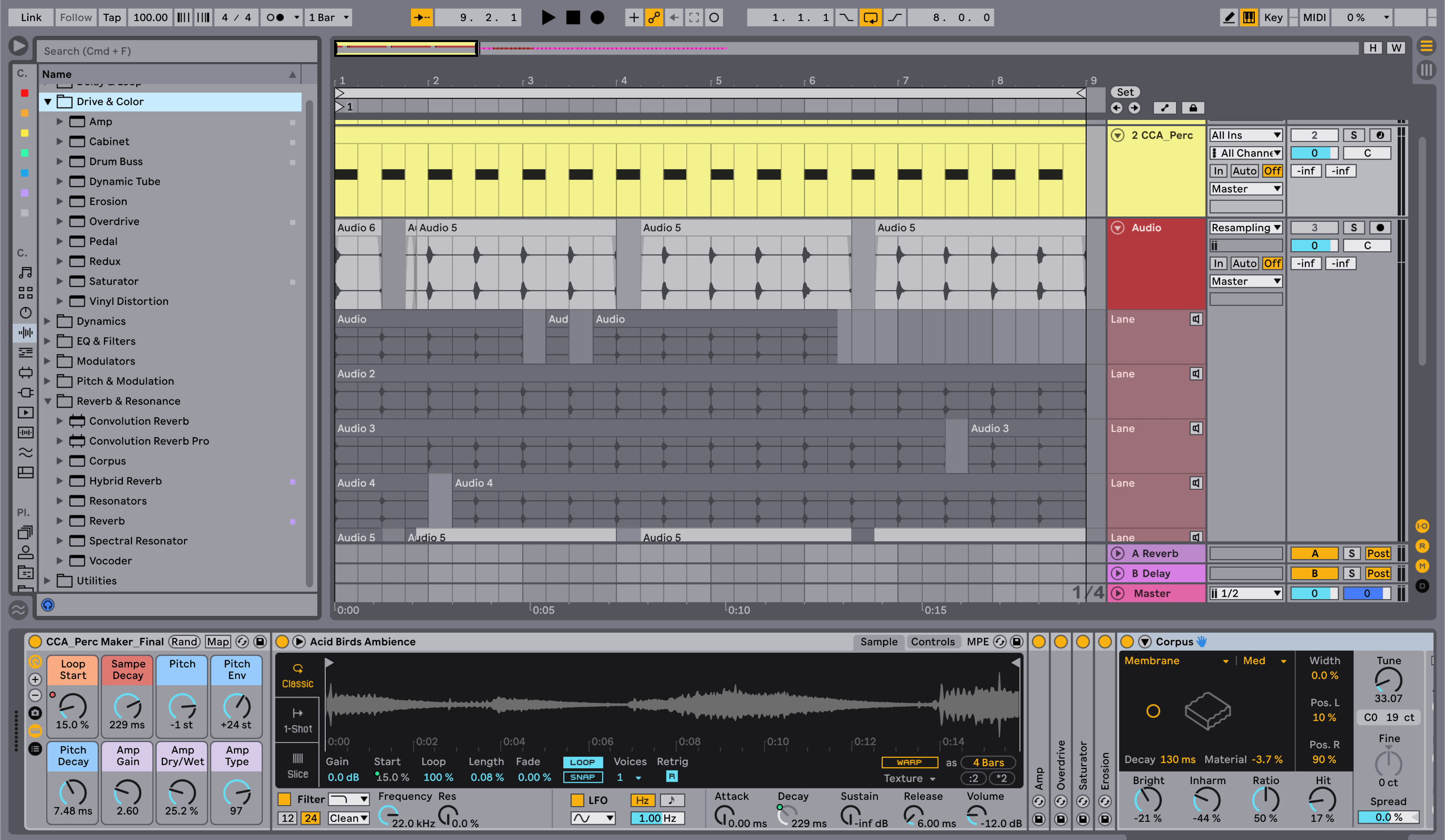
Crypto Cipher Newsroom
Creative Drum And Percussion Sound Design With Ableton Simpler

Creative Drum And Percussion Sound Design With Ableton Simpler
Creative Drum And Percussion Sound Design
Ableton Live has a lot of tools for creative sound design. In this article we will explore an interesting technique to create your own unique percussion samples from scratch using any sample of your choice. This technique is extremely simple and effective for cooking up new perks quickly removing any need for incessant sample pack diving. We will be using Ableton's simpler for the main sound design aided with some audio effects.
Selecting the Sample
Theoretically you can use any sample you want but we will make the most out of this technique if we use loops or long samples that varies over time and has a lot of textures. Fx Loops are a great choice, so are vocal and bass loops. We have chosen the Acid Birds Ambience Fx loop from the Drive and Glow pack that comes with Ableton Live 11 Suite.
Processing the Sample with Ableton Simpler













Download Link: Click Here






